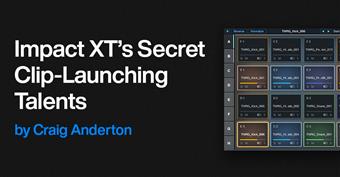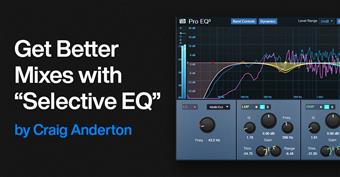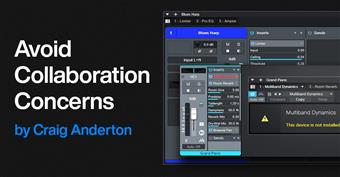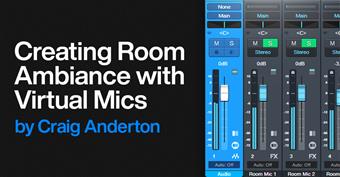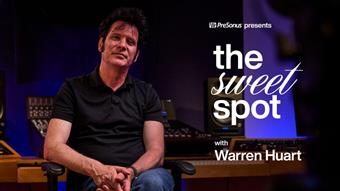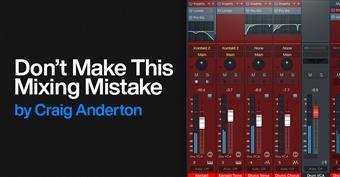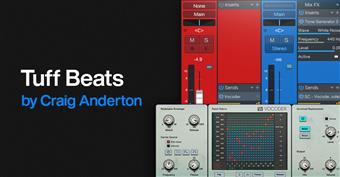
I was never a big fan of MIDI guitar, but that changed when I discovered two guitar-like controllers-the YRG1000 You Rock Guitar and Zivix Jamstik. Admittedly, the YRG1000 looks like it escaped from Guitar Hero to seek a better life, but even my guitar-playing tubes and Telecasters forever! compatriots are shocked by how well it works. And Jamstik, although it started as a learn-to-play guitar product for the Mac, can also serve as a MIDI guitar controller. Either one has more consistent tracking than MIDI guitar retrofits, and no detectable latency.
The tradeoff is that they're not actual guitars, which is why they track well. So, think of them as alternate controllers that take advantage of your guitar-playing muscle memory. If you want a true guitar feel, with attributes like actual string-bending, there are MIDI retrofits like Fishman's clever TriplePlay, and Roland's GR-55 guitar synthesizer.
In any case, you'll want to set up your MIDI guitar for best results in Studio One-here's how.
Poly vs. Mono Mode
MIDI guitars usually offer Poly or Mono mode operation. With Poly mode, all data played on all strings appears over one MIDI channel. With Mono mode, each string generates data over its own channel-typically channel 1 for the high E, channel 2 for B, channel 3 for G, and so on. Mono mode's main advantage is you can bend notes on individual strings and not bend other strings. The main advantage of Poly mode is you need only one sound generator instead of a multi-timbral instrument, or a stack of six synths.
In terms of playing, Poly mode works fine for pads and rhythm guitar, while Mono mode is best for solos, or when you want different strings to trigger different sounds (e.g., the bottom two strings trigger bass synths, and the upper four a synth pad). Here's how to set up for both options in Studio One.
To add your MIDI guitar controller, choose Studio One > Options > External Devices tab, and then click Add Figure 1: Check Split Channels if you plan to use a MIDI guitar in mono mode.
To use your guitar in Mono mode, check Split Channels and make sure All MIDI channels are selected (Fig. 1). This lets you choose individual MIDI channels as Instrument track inputs.
For Poly mode, you can follow the same procedure as Mono mode but then you may need to select the desired MIDI channel for an Instrument track (although usually the default works anyway). If you're sure you're going to be using only Poly mode, don't check Split Channels, and choose the MIDI channel over which the instrument transmits.
Note that you can change these settings any time in the Options > External Devices dialog box by selecting your controller and choosing Edit.
Choose Your Channels
For Poly mode, you probably won't have to do anything-just start playing. With Mono mode, you'll need to use a multitimbral synth like SampleTank or Kontakt, or six individual synths. For example, suppose you want to use Mai Tai. Create a Mai Tai Instrument track, choose your MIDI controller, and then choose one of the six MIDI channels (Fig. 2). If Split Channels wasn't selected, you won't see an option to choose the MIDI channel.
Figure 2: If you chose Split Channels when you added your controller, you'll be able to assign your instrument's MIDI input to a particular MIDI channel.
Next, after choosing the desired Mai Tai sound, duplicate the Instrument track five more times, and choose the correct MIDI channel for each string. I like to Group the tracks because this simplifies removing layers, turning off record enable, and quantizing. Now record-enable all tracks, and start recording. Fig. 3 shows a recorded Mono guitar part-note how each string's notes are in their own channel.
Figure 3: A MIDI guitar part that was recorded in Mono mode is playing back each string's notes through its own Mai Tai synthesizer.
To close out, here are three more MIDI guitar tips.
In Mono mode with Mai Tai (or whatever synth you use), set the number of Voices to 1 for two reasons. First, this is how a real guitar works-you can play only one note at a time on a string. Second, this will often improve tracking in MIDI guitars that are picky about your picking.
Use a synth's Legato mode, if available. This will prevent re-triggering on each note when sliding up and down the neck, or doing hammer-ons.
The Edit view is wonderful for Mono mode because you can see what all six strings are playing, while editing only one.
MIDI guitar got a bad rap when it first came out, and not without reason. But the technology continues to improve, dedicated controllers overcome some of the limitations of retrofitting a standard guitar, and if you set up Studio One properly, MIDI guitar can open up voicings that are difficult to obtain with keyboards.
In Mono mode with Mai Tai (or whatever synth you use), set the number of Voices to 1 for two reasons. First, this is how a real guitar works-you can play only one note at a time on a string. Second, this will often improve tracking in MIDI guitars that are picky about your picking.
More from PreSonus
19/04/2024
By Craig Anderton
Impact XT can launch clips, which is great for songwriting (see the blog post Songwriting with Impact XT). But few people realize that Impact...
12/04/2024
By Craig Anderton
Good mixes often depend on carving out a unique sonic space for each instrument, so you can hear them clearly. Sometimes carving out that spa...
05/04/2024
By Craig Anderton
MIDI guitars are a niche product, because the learning curve can be daunting for some guitar players. However, I'm surprised how many pro...
29/03/2024
By Craig Anderton
As the universe of Studio One users grows, so do opportunities for collaboration. But your collaborator may not be using the same version of ...
22/03/2024
By Craig Anderton
Over three years ago, I wrote a blog post on how to make a drumcoder. Its design was somewhat like a vocoder-drum audio served as a modulat...
15/03/2024
By Craig Anderton
One of Atmos's coolest features is scalability. No matter how complex your Atmos project may be, you can render it as Binaural, 5.1, 5.1....
13/03/2024
Watch the Brooklyn Synthpop duo remix their song Blame in Studio One
Less than 24 hours after meeting each other, producer Luke Moellman and vocalist Jon San...
10/03/2024
By Craig Anderton
The impetus behind this design was wanting to add envelope flanging to amp sims like Ampire. But there's a problem: most amp sim outputs ...
01/03/2024
By Craig Anderton
Supplementing close-miking techniques with room mics gives acoustic sounds a life-like sense of space. Typically, this technique involves pla...
27/02/2024
Notion Mobile v3 took mobile music creation to the next level with support for iOS, Android, Windows, Fire OS and macOS. Now v3.3 adds many enhancements and fix...
26/02/2024
Logic's Grammy-nominated producer breaks down his Sweet Spot.
Before he found success as an avant-garde hip hop producer, 6ix was just 30 units shy of a de...
25/02/2024
The Grammy-nominated multi-Platinum producer breaks down his Sweet Spot.
From the studio with chart-topping artists like Aerosmith and The Fray, to empowering ...
23/02/2024
By Craig Anderton
Do you think of mixes in absolute terms, or relative terms? Knowing the difference, and when to apply which approach, can make a huge differe...
16/02/2024
By Craig Anderton
Calling all beats/hip-hop/EDM/hard rock fans: This novel effects starts with drums modulating the Vocoder's white noise carrier, and take...
09/02/2024
This tip is about working with stereo, NOT about Dolby Atmos or surround-but we're going to steal some of what Atmos does to reinvent stereo panning. Stud...
07/02/2024
The GRAMMY-winning recording and mix engineer shows us how he uses Studio One to create an artful immersive mix.
Jeff Ellis is a force to be reckoned with. The...
02/02/2024
Presence's sound library includes a fine acoustic 12-string guitar, but not an electric one. So, perhaps it's not surprising that one of the more popula...
26/01/2024
At first, this might not seem too exciting. But follow the directions below, and try comping using this method-I don't think you'll be disappointed. Thi...
19/01/2024
You know the feeling: You're tracking or doing an overdub with a virtual instrument or amp sim, but you're frustrated by the excessive latency inherent ...
12/01/2024
Recording audio using more than one feed from the same source may create phase issues. For example, when miking a bass amp and taking a DI (dry) input, the DI&#...
05/01/2024
If you haven't experimented yet with mid-side stereo miking, you'll be in for a treat when you do. Here's why:
Record background singers with gorge...
29/12/2023
This complements the tip Better Ducking for Voiceovers and Podcasts and the tip Why I Don't Use Compression Anymore. It applies the concept of voiceover duc...
22/12/2023
Engineers sometimes advocate using high-pass filters to clean up the low end and tighten the sound. Others believe that because of issues inherent in highpass...
20/12/2023
The GRAMMY-nominated artist, producer, and songwriter shows us how he uses Studio One to cook a musical idea from scratch.
Josh Cumbee is a triple threat: The ...
15/12/2023
This wasn't a conscious decision, or something I planned. But when I looked through my last few songs while seeking candidates for a book's screenshots,...
08/12/2023
First, a follow-up: In the October 13 tip about creating Track Presets for parallel processing, I mentioned that Track Presets can't include buses, which is...
01/12/2023
Vocoder's aren't normal effects. For example, Arturia's Vocoder V is an effect/instrument hybrid, because it's an audio effect that includes a...
24/11/2023
For over a decade, stereo and mono vinyl records co-existed before the transition to stereo was complete. During that time, many records were released in both m...
17/11/2023
Strings can enhance almost any genre of music-and with a little more effort, you can do string arrangements that go beyond simply adding a string pad preset. So...
10/11/2023
Since Dynamic EQ was introduced in version 5, I've used it to replace and improve some techniques I used to do with static EQ. For example, I'm a fan of...
03/11/2023
Gregor Beyerle recently posted a video called Producer vs. Engineer-What's the Difference?, which had quite a few comments. It seems most people feel that f...
27/10/2023
Sending too many low frequencies through reverb gives a bloated, muddy sound. This is one reason why you'll rarely see a send from a bass track going into r...
20/10/2023
While trying to do something else with Melodyne, I stumbled on this way to add depth or tightness to drum sounds-quickly and easily. Here's the sound of an ...
13/10/2023
Parallel processing splits a signal into two or more parallel channels. Bi-amping is a common example of parallel processing:
One channel processes low frequen...
06/10/2023
Everyone talks about the importance of Dolby Atmos for post-production, but the implications go further than that. Atmos really does change how you create and ...
29/09/2023
You don't need a massive surround system with speakers wired all over your studio to create immersive audio. Whether you want surround or Dolby Atmos mixes...
22/09/2023
By Craig Anderton
Background music or environmental sounds are usually an essential part of commercials, movies, presentations, podcasts, and more. When doing ...
15/09/2023
The post Mixing la Studio One had a great response, so here's another tip that relates more to making better music than making better-sounding music. We&#...
08/09/2023
This FX Chain's inspiration is the Tilt filter circuit created by Tonelux designer Paul Wolff. First used in the Tonelux MP1A mic preamp, the Tilt filter h...
01/09/2023
But first, some breaking news: Version 1.5 of The Huge Book of Studio One Tips and Tricks is now available from the PreSonus shop. Like previous versions, it�...
25/08/2023
Studio One 6.2 reworked Layer and Take handling, and some of the new functionality is exceptionally useful. For example, suppose you want to record comp vocals ...
18/08/2023
We haven't done a boutique digital effect for Studio One Professional in a while, so let's use a plugin in a totally wrong way-yet end up with somethi...
11/08/2023
MIDI drum loops have a bad rap, because some musicians consider them metronomic and boring. But they don't have to be. Subtly leading or lagging the beat at...
04/08/2023
Ask 100 recording engineers about their approach to mixing, and you'll hear 100 different answers. Here's mine, and how this approach relates to Studio ...
28/07/2023
FL Studio is a cool program. Yet when some users see me working with Studio One's features like comping tools, harmonic editing, the lyrics track, Mix FX, M...
21/07/2023
Bass has a tough gig. Speakers have a hard time reproducing such low frequencies. Also, the ear is less sensitive to low (and high) frequencies compared to midr...
18/07/2023
Notion Mobile v3 took mobile music creation to the next level with support for iOS, Android, Windows and macOS. Now v3.2 adds many enhancements and fixes, as we...
14/07/2023
First, an announcement: If you own the eBook How to Record and Mix Great Vocals in Studio One, you can download the 2.1 update for free from your PreSonus acc...
07/07/2023
Let's transform your acoustic piano instrument sounds-with effects that showcase the power of Multiband Dynamics. Choose from two download links at the end ...
24/06/2023
Acoustic drum loops freeze-dry a drummer's playing-so, what you hear is what you get. What you get. What you get. What you get. What you get. What you get.
...
 I was never a big fan of MIDI guitar, but that changed when I discovered two guitar-like controllers-the YRG1000 You Rock Guitar and Zivix Jamstik. Admittedly, the YRG1000 looks like it escaped from Guitar Hero to seek a better life, but even my guitar-playing tubes and Telecasters forever! compatriots are shocked by how well it works. And Jamstik, although it started as a learn-to-play guitar product for the Mac, can also serve as a MIDI guitar controller. Either one has more consistent tracking than MIDI guitar retrofits, and no detectable latency.
I was never a big fan of MIDI guitar, but that changed when I discovered two guitar-like controllers-the YRG1000 You Rock Guitar and Zivix Jamstik. Admittedly, the YRG1000 looks like it escaped from Guitar Hero to seek a better life, but even my guitar-playing tubes and Telecasters forever! compatriots are shocked by how well it works. And Jamstik, although it started as a learn-to-play guitar product for the Mac, can also serve as a MIDI guitar controller. Either one has more consistent tracking than MIDI guitar retrofits, and no detectable latency.













